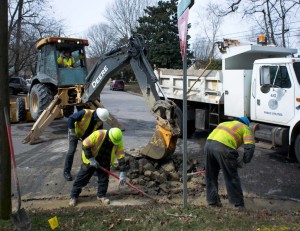We’ve had a very active hurricane season this year and so far Hampton Roads has been spared. But you don’t have to look far to see what life without water services would look like. For those with hurricane damage in the most remote areas, like Puerto Rico or Key West, the recovery effort to restore everyday utility services may be a long road. And as our thoughts are with those recovering from these catastrophic storms, we recognize the “Imagine a Day Without Water” campaign on Thursday, Oct. 12, to express our gratitude for the robust water and wastewater infrastructures that keep Hampton Roads flowing.
Imagine waking up in the morning to find the tap has gone dry. What would you miss most? Your morning cup of coffee? A hot shower? Cooking your favorite meal? How about the pitiful look on your pets’ faces when they realize there’s nothing for their water bowl? Whatever you’d miss most, the reality is that for the 1.7 million residents of Hampton Roads, access to clean, reliable tap water is as simple as turning on the tap. Water and wastewater services are one of the most reliable public services and we depend on these systems for growing our food, running our schools and hospitals, and fueling the economy and local entrepreneurship.
Our region’s hard-working water and wastewater systems bring clean water to us and take sewage away to be treated before it is released safely back into the environment. But it’s not just water that you support with your monthly water and wastewater bill. While water falls from the sky and flows through our rivers, it is far from free. Collecting, storing, treating, and bringing water to and from our homes and businesses cost millions of dollars each year. Here in Hampton Roads, our public water systems are supported by 12 drinking water treatment plants with over 50 wells and 21 reservoirs storing over 34 billion gallons of water. And once we’ve used that water, more than 1,500 pump stations carry our sewage to the 10 wastewater treatment plants across the region. Just like our transportation routes, our region’s 6,500 miles of water distribution pipelines and over 5,800 miles of sanitary sewer lines need ongoing maintenance so that the reliable services they provide can continue uninterrupted.
Investments in infrastructure range from smaller replacement project to large scale initiatives. HRSD’s Sustainable Water Initiative for Tomorrow (SWIFT) will take highly treated water that is normally discharged into local rivers and put it through additional treatment to raise it to drinking water standards. The water can then be injected into the Potomac Aquifer, creating a sustainable water resource for future generations, while simultaneously addressing land subsidence and saltwater intrusion. Smaller projects, like the Beach Road replacement project in the Fox Hill area of Hampton, focus on replacing aging water mains with new lines that reduce the potential for leaks and breaks.
While our region’s water and wastewater systems may be out of sight, they should not be out of mind. On Oct. 12, join askHRgreen.org, your local water utilities and groups across the country as we recognize the “Imagine a Day Without Water” campaign and the important role our underground water and wastewater systems play in delivering water services that fuel our economy, quality of life and vital health and public safety services. We invite you to join us in this effort by:
- Giving up one activity that day that involves water and see what it’s like to go without.
- Going to www.shareH2o.org and consider a gift to the Help 2 Others (H2O) Program, a local 501(c)3 organization that assists families in danger of losing residential water service because of an unexpected crisis.
- Visiting one of our local water reservoirs to see firsthand where your water comes from and the trip it must make to be delivered to your home.
- Discussing the importance of our region’s ongoing investment in this critical infrastructure by joining the conversation at facebook.com/askHRgreen.
An investment that ensures our region’s public health, safety and economic vitality is one that should be maintained. It’s hard to imagine living without it.



